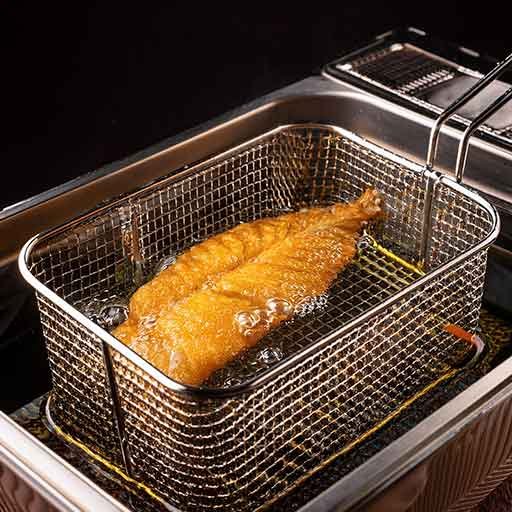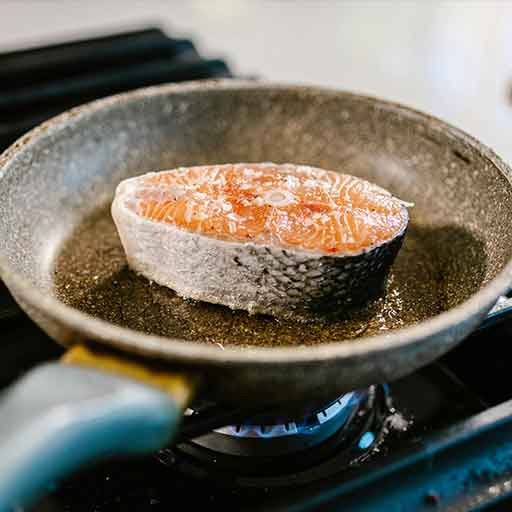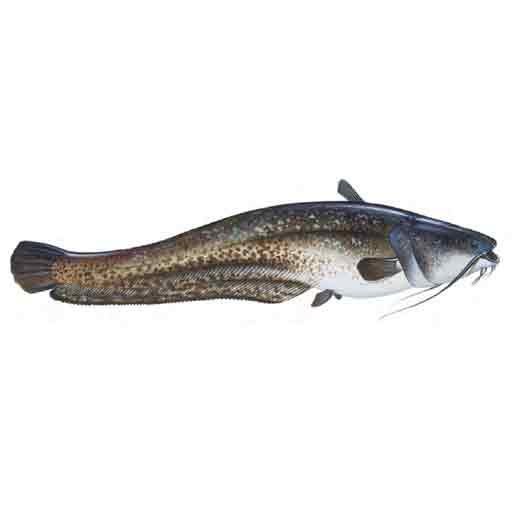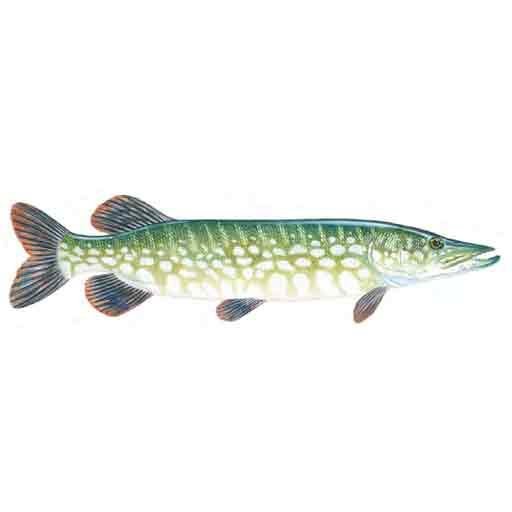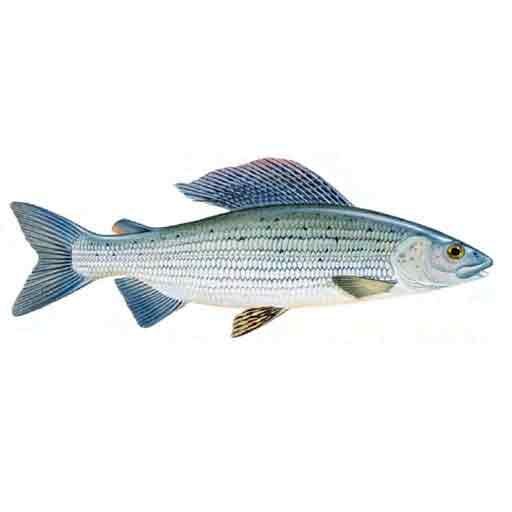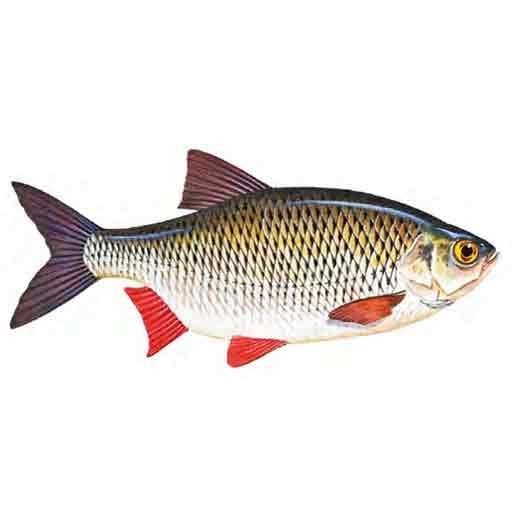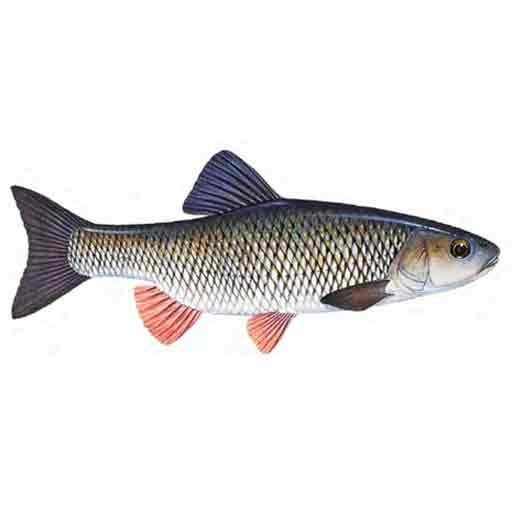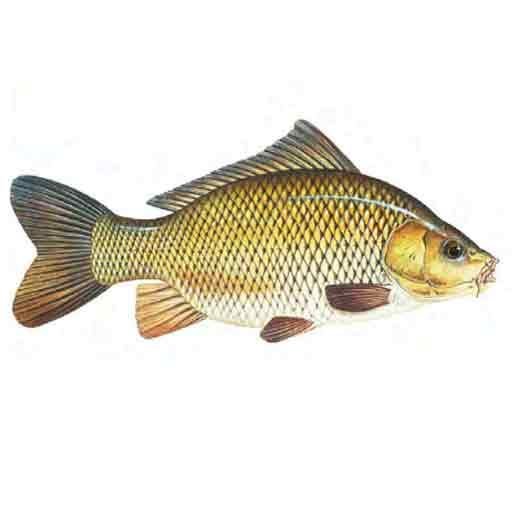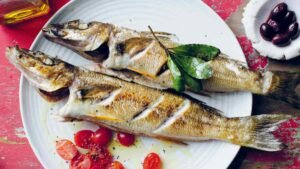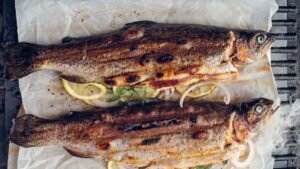The northern pike is an extremely adept, streamlined predator. Its body is designed principally for intense bursts of high speed, while a long, flat snout, plenty of extremely sharp teeth, and complex jaws enable it to take relatively large prey fish and even small aquatic animals. This fish prefers a solitary existence, and it is a skilful and aggressive feeder, often using weeds for cover.
It can also be cannibalistic, attacking smaller fish of its own species. It inhabits clear lakes, ponds, and rivers, and is considered a territorial fish. On some coastlines, the northern pike enters brackish water to feed on sea fish.
It is generally accepted that some of the largest pike are to be found in the larger lochs of Scotland and Ireland. Most of the specimens caught are much smaller than the maximum recorded weight: 4.5 to 9kg (10–20lb) is more common for line-caught pike.
Northern pike are usually targeted with baits and lures. Some massive pike have also been caught on fly-fishing tackle. Their sharp teeth require the use of wire traces. A close relative, the huge muskellunge or “muskie” (Esox masquinongy) of North America is a popular quarry that can grow larger than the northern pike.


